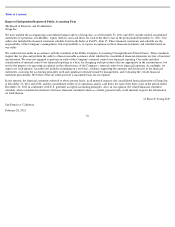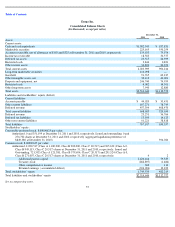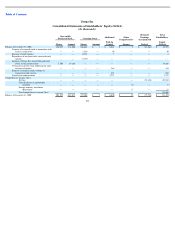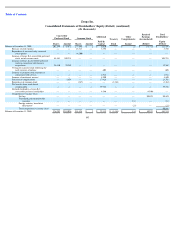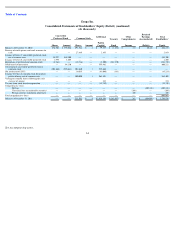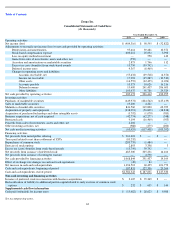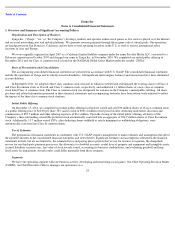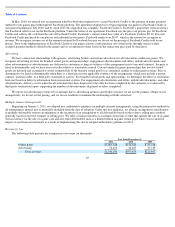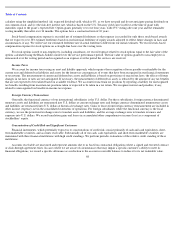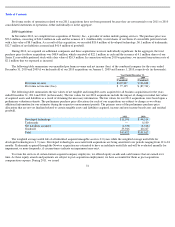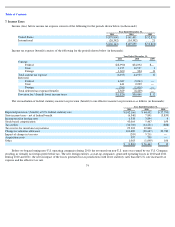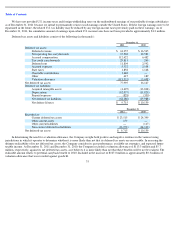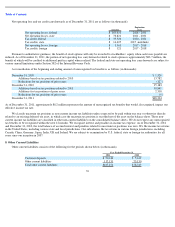Zynga 2011 Annual Report Download - page 70
Download and view the complete annual report
Please find page 70 of the 2011 Zynga annual report below. You can navigate through the pages in the report by either clicking on the pages listed below, or by using the keyword search tool below to find specific information within the annual report.
Table of Contents
Cost of Revenue
Amounts recorded as cost of revenue relate to direct expenses incurred in order to generate online game revenue. Such costs are recorded
as incurred. Our cost of revenue consists primarily of hosting and data center costs related to operating our games, including depreciation;
consulting costs primarily related to third-party provisioning of customer support services; payment processing fees; and salaries, benefits and
stock-based compensation for our customer support and infrastructure teams. Cost of revenue also includes amortization expense related to
purchased technology of $28.4 million, $8.8 million and $2.3 million for the years ended December 31, 2011, 2010 and 2009, respectively.
Cash and Cash Equivalents
Cash equivalents consist of cash on hand, money market funds and U.S. government-issued obligations with maturities of 90 days or less
from the date of purchase.
Marketable Securities
Marketable securities consist of U.S. government-
issued obligations and corporate debt securities. Management determines the appropriate
classification of marketable securities at the time of purchase and reevaluates such determination at each balance sheet date. The fair value of
marketable securities is determined as the exit price in the principal market in which we would transact. Based on our intentions regarding our
marketable securities, all marketable securities are classified as available-for-sale and are carried at fair value with unrealized gains and losses
recorded as a separate component of other comprehensive income, net of income taxes. Realized gains and losses are determined using the
specific-identification method and are reflected in the consolidated statements of operations when they are realized. When we determine that a
decline in fair value is other than temporary, the cost basis of the individual security is written down to the fair value as a new cost basis and the
amount of the write-down is accounted for as a realized loss in other income (expense). The new cost basis will not be adjusted for subsequent
recoveries in fair value. Determination of whether declines in fair value are other than temporary requires judgment regarding the amount and
timing of recovery. No such impairments of marketable securities have been recorded to date.
Restricted Cash
Restricted cash consists of collateral for facility operating lease agreements and funds held in escrow in accordance with the terms of
certain of our business acquisition agreements.
Accounts Receivable and Allowance for Doubtful Accounts
Accounts receivable are recorded and carried at the original invoiced amount less an allowance for any potential uncollectible amounts. We
review accounts receivable regularly and make estimates for the allowance for doubtful accounts when there is doubt as to our ability to collect
individual balances. In evaluating our ability to collect outstanding receivable balances, we consider many factors, including the age of the
balance, the customer’s payment history and current creditworthiness, and current economic trends. Bad debts are written off after all collection
efforts have ceased. We do not require collateral from our customers.
Property and Equipment
Property and equipment are stated at cost less accumulated depreciation. Depreciation is recorded using the straight-line method over the
estimated useful lives of the assets, generally 24 to 36 months. Leasehold improvements are amortized over the shorter of the estimated useful
lives of the improvements or the lease term.
66


